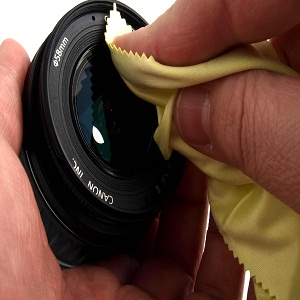How to Clean Photographic Lenses

The lens is the eye of the camera. It works on the same principle as our own eyes. The more of you take care of it, the sharper and clearer images it produces. Of course you do not have the option of using contact glasses on it like you do when the eyesight goes weak.
Photographic lenses are expensive and sensitive. The lightest of dust accumulation can cause scratches and affect the quality of the photographs you take. Even our own fingerprints can cause a smudge and when this smudge is left for long, it can cause permanent damage to the lens coating and deprive you of picture clarity. Therefore, it is very important to do regular cleanup of the lens for its long and healthy life. Lens cleaning is a really easy task using very simple tools and you can make it a part of your routine, especially after you use the camera.
Our step by step guide shows you how to clean your photography lenses in the best possible manner.
Things Required:
– Soft brush
– Silky cloth (or other cloth with very thin fibres)
– Lens cleaning substance or rubbing (isopropyl) alcohol
Instructions
-
1
Since the lens is very sensitive to pressure and sharp surfaces, you need to use a very soft brush for the cleaning. The brush should have very soft bristles. Use this brush to remove the trapped dirt from the crevices around the lens. Since a cloth cannot reach into these crevices, the brush bristles will be able to do so.
-
2
Take a microfibre lens cleaning cloth. This cloth is usually available at optic stores and is lint free to reduce the impact with the lens. Make sure that the cloth is chemical free. Breath on to the lens surface so that it is moist. Fold the cloth neatly and use it to wipe the lens in a circular motion.
-
3
For effective cleaning, pour a few drops of lens cleaning fluid on the cleaning cloth. The cleaning fluid should be methanol or alcohol based; will generally be available at optic and digital stores. Wipe the lens in circular motion with this cloth. This will remove any persistent stains on the lens through the cleaning properties of the fluid specifically used for this purpose.







